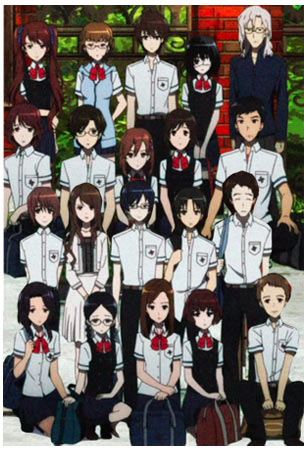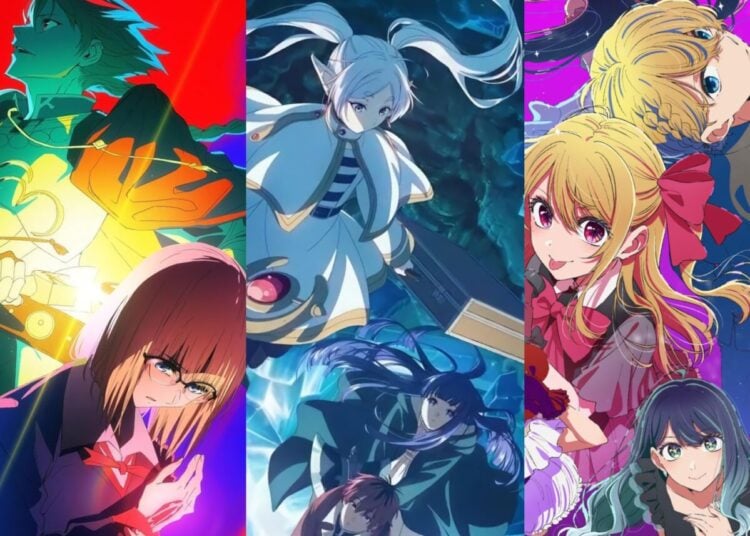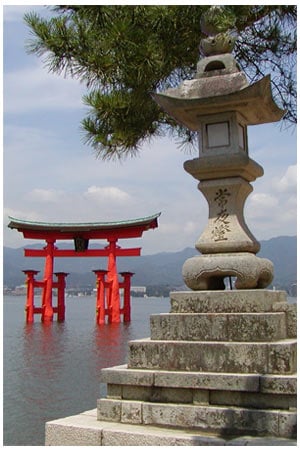It’s fun to analyze the various social rules at work in Japan, most of which are completely invisible to Japanese people themselves. Humility is an important trait here, and it’s considered good manners to act in a reserved and unaggressive manner, which is why Japanese athletes are so self-effacing during interviews. A lot of the “vertical” nature of Japanese relationships is reinforced by the language, and you always use different verb forms depending on whether you’re addressing, say, a senpai or kohai (a senior or junior in a school or organization). Then there’s the huge body of customs related to uchi and soto, or in-group and out-group, e.g. how people behave with individuals from the same class, club or company. In episode 10 of the horror anime Another there’s a scene in which the class poses for a group photo. After one student (Mochizuki) takes the picture, another (Teshigawara) says, “Now Mochizuki, you get in the picture and I’ll use the camera.” In any group photo it’s important that two photos always be taken, so that every member of the group is represented in a picture. If the person who took the first shot wasn’t invited to be in another one, it would imply that he was an outsider, not a member of the group, which would be very rude to him. This is one reason why I was happy to see digital photography arrive after many years of sacrificing unnecessary film in the name of Japanese social dynamics.

There are subtle rules for taking group photographs.















